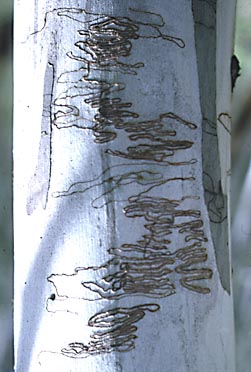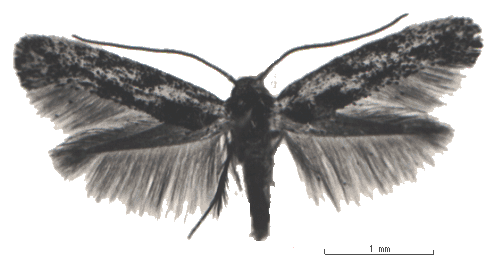![Director of National Parks [logo]](/images/dnp_90px.gif)


![Director of National Parks [logo]](/images/dnp_90px.gif) |
 |
 |
 The
eggs of this moth are laid between the old and new season's bark of gum-barked
eucalypt trees. As the larva burrows between the bark layers it leaves a tunnel
which is revealed when the old bark falls away. Like all insect larvae, that
of Ogmograptis scribula increases in size periodically and these changes
can be seen as a widening in the tunnel revealed as a scar on the bark surface.
The
eggs of this moth are laid between the old and new season's bark of gum-barked
eucalypt trees. As the larva burrows between the bark layers it leaves a tunnel
which is revealed when the old bark falls away. Like all insect larvae, that
of Ogmograptis scribula increases in size periodically and these changes
can be seen as a widening in the tunnel revealed as a scar on the bark surface.
In December the larvae tunnel to the surface to pupate. We do not know whether the larva forms its cocoons under lose bark on the tree or descends to the ground to pupate in the litter on the forest floor – the cocoon is very small and almost impossible to find. Inside its cocoon, Ogmograptis scribula undergoes metamorphosis becoming first a pupa and then assuming its final form.
When growth and development are complete the adult moth emerges. It is very small (1-2 mm in length) and is rarely seen. In the Canberra region Ogmograptis scribula lays its eggs mostly on the Scribbly Gum, Eucalyptus rossii, and its scribbles are a good characer for identifying this gum. However in other parts of Australia the scribbles appear on different eucalypt species.
